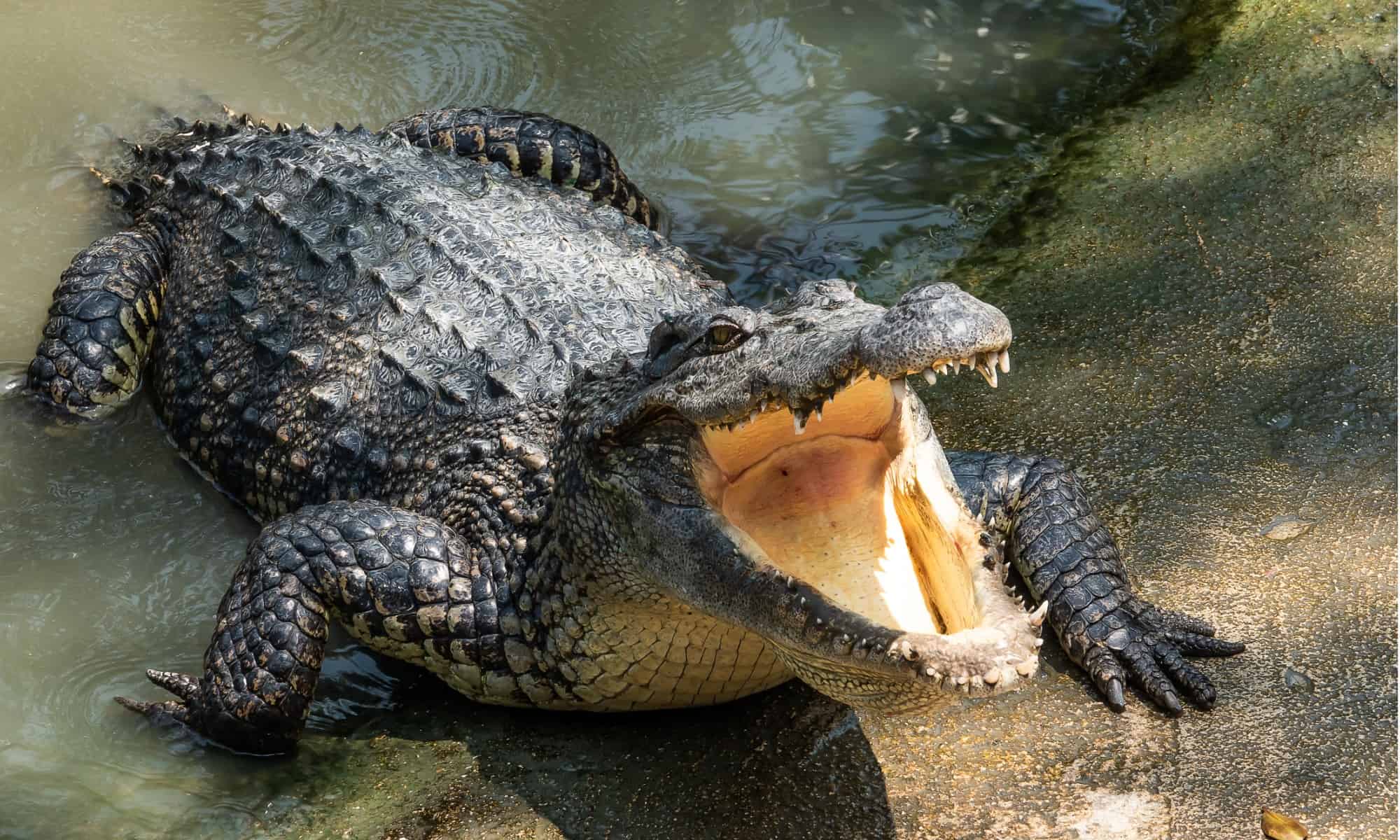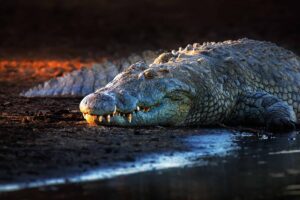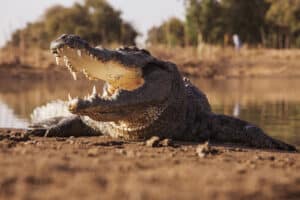Crocodiles, like most reptiles, have a bad reputation for being mindless creatures who only snap their mouths open and shut. But there is much more to these reptilians than we previously understood. New research confirms that alligators and crocodiles use tools to hunt their prey. Read on to discover how crocodiles use tools to hunt, what tools they choose, how they hunt, and other advanced behaviors they possess.
Where Are Crocodiles Found?

Crocodiles live in 91 countries across five continents.
©David Havel/Shutterstock.com
Crocodiles are giant semi-aquatic reptiles that can grow up to 20 feet and weigh over 2,200 pounds. They live in 91 countries across five continents: North America, South America, Africa, Asia, and Australia. In the U.S., you will only find crocodiles in brackish or saltwater habitats on the very southern tip of Florida. However, you can find alligators in marshes, swamps, and lakes from North Carolina to the Rio Grande in Texas.
Different crocodile species live throughout the world, but most prefer saltwater habitats in humid lowland tropics, like mangroves, swamps, and estuaries. On the other hand, alligators can tolerate saltwater for short periods but must live in freshwater because they don’t have salt glands. They inhabit slow-moving rivers, marshes, and lakes. You will often find these reptiles lying still in the water or on land surrounded by vegetation, waiting for their prey to get close.
How Do Crocodiles Hunt Their Prey?
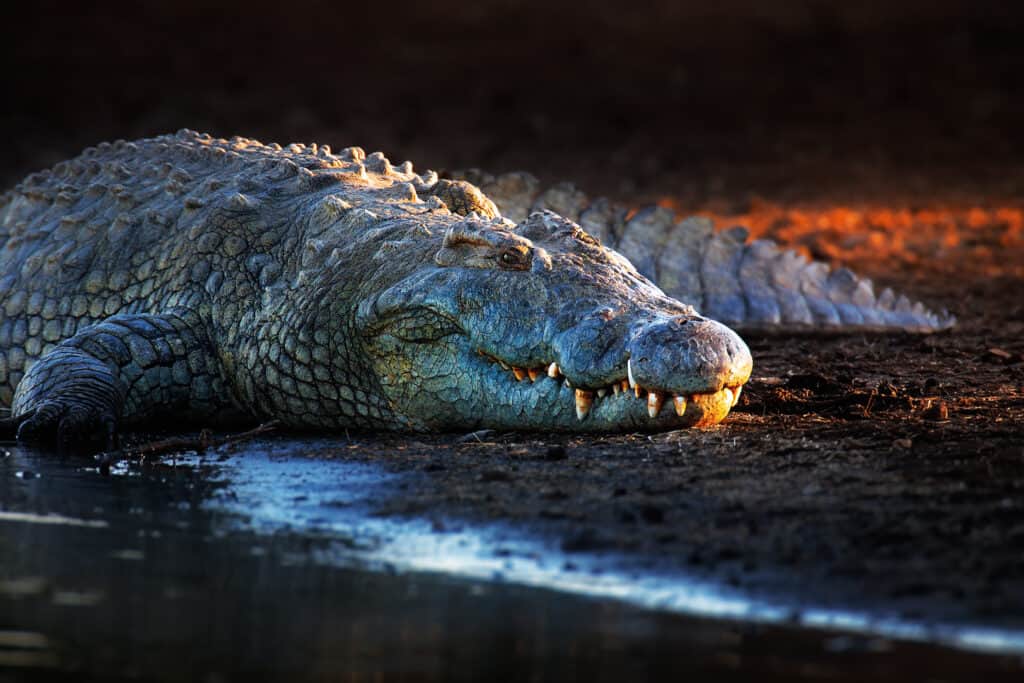
Crocodiles are ambush predators and lie in wait for their prey.
©Johan Swanepoel/Shutterstock.com
Crocodiles are ambush predators that sit and wait for their prey to come across their path before rushing to attack. These reptiles may appear to be slow-moving creatures, but they are swift and agile when they go to strike. Crocodiles are the top predators in their environment, taking down prey as large as a shark or big cat. Their diet includes fish, birds, crustaceans, amphibians, reptiles, mammals, and even other small crocodiles.
Their advanced senses contribute to their hunting success. Crocodiles are nocturnal and use their excellent night vision to aid them against their prey’s weaker vision. They can also see in color and have a membrane that protects their eyes underwater while still allowing them their vision. Their well-developed sense of smell will enable them to detect prey or carcasses from long distances, and their excellent hearing allows them to sense movement in or near the water. Finally, they have touch sensors in their thick skin that respond to the slightest vibration or pressure change, allowing them to detect prey and predators even in complete darkness.
Do Crocodiles Use Tools to Hunt?
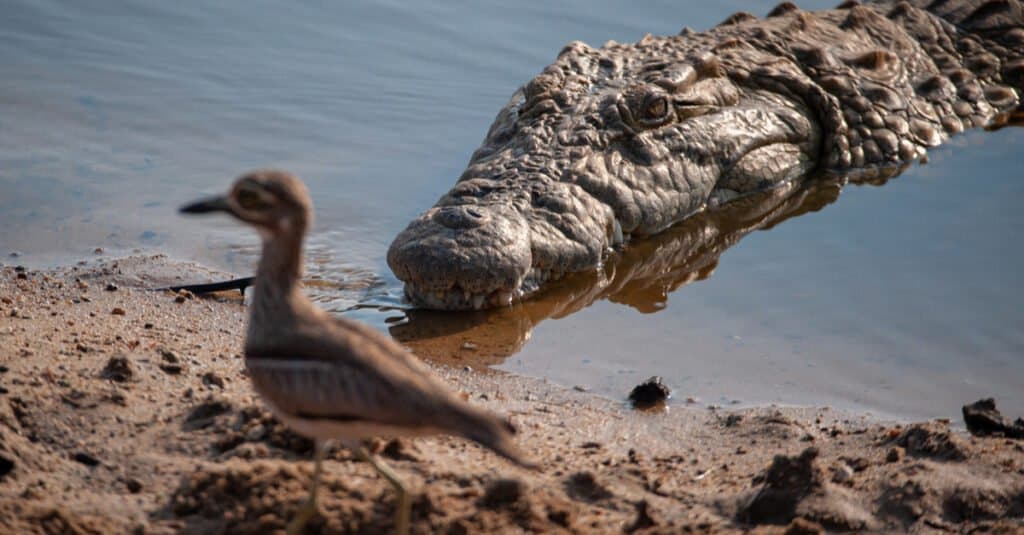
Crocodiles have been known to place nesting material on their heads to lure birds to them.
©Rudi Hulshof/Shutterstock.com
What’s worse than a giant carnivore with massive, sharp teeth and quick movements? How about one that can think, reason, and make complex decisions? Crocodiles can use tools to lure their unsuspecting prey.
Research shows that crocodiles and alligators can attract birds looking for nesting material by placing sticks on their heads and attacking once they get too close. This baiting behavior has been observed in American alligators in Louisiana and marsh crocodiles in India.
Some bird species strategically nest in areas near alligators to prevent other tree-climbing creatures from reaching their nests. The downside? Eggs or chicks occasionally fall into the water and get snatched by the crocs. But the tradeoffs appear to be worth it. However, many are unaware of the bait-and-switch tactics of the cunning crocodile.
During nesting season, materials like small sticks and twigs are challenging to find. Many bird species will even fight over the precious material. And apparently, crocodiles are aware of this. They will place the sticks on their snouts and remain perfectly still for hours until a curious bird reaches out to grab one for its nest. Researchers observed this tactic daily during the peak of the nesting season.
This calculated baiting is a surprising breakthrough in archosaurian behavior. It’s not the stick lures that make this discovery so fascinating; it’s the fact that these gators and crocs take into account the seasonality of their prey’s behavior. They understand much more than we previously thought.
How Advanced Are Crocodiles?
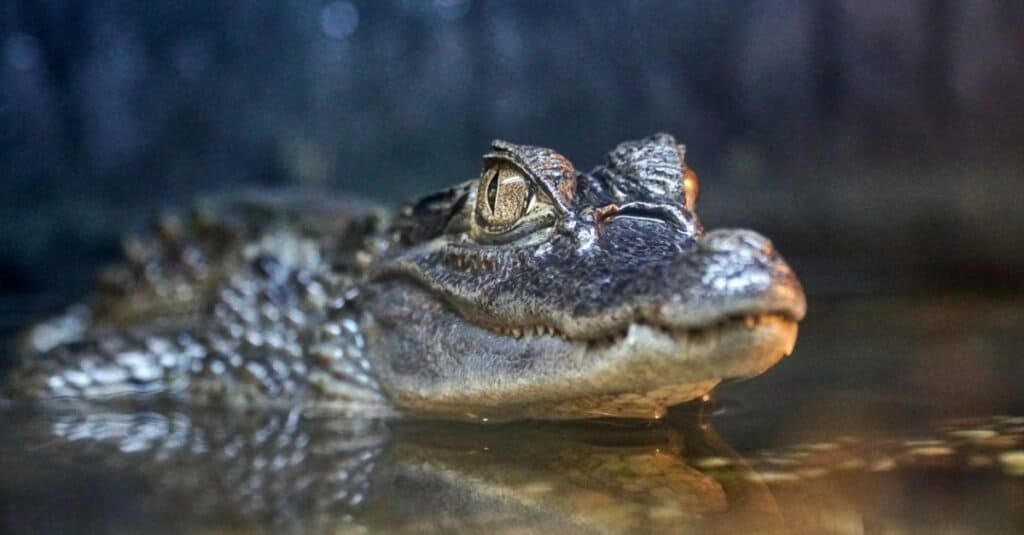
Most crocodiles are extremely intelligent and can make reasoned decisions.
©iStock.com/Vladimir Bolokh
Crocodiles are biologically complex reptiles, and their brains feature a cerebral cortex, which provides them with higher-level processes. They can think, memorize, reason, and make complicated decisions. These brilliant animals display sophisticated and advanced behavior uncommon in reptiles, such as developed parenting techniques, elaborate communication, and human-like hunting techniques. They also engage in animal play behavior, such as chasing, climbing, wrestling, sliding down slopes, and riding on each other’s backs. These creatures can coordinate their actions as a group, often utilizing those whose strengths best fit the situation.
There is much we still don’t know or understand about crocodiles and other animals. Proper and extensive research is needed to better comprehend the creatures that share our planet.
What Other Animals Use Hunting Tools?
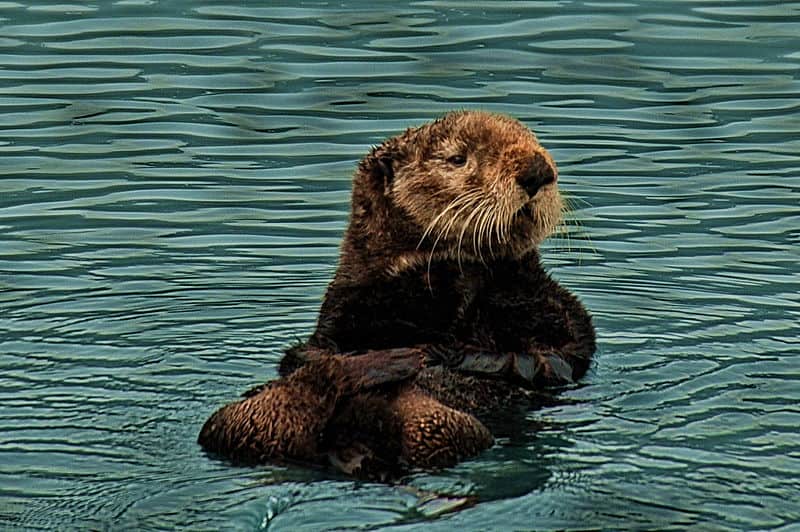
Sea otters have been known to use rocks to crack open clams.
©Dave Bezaire & Susi Havens-Bezaire / Creative Commons – Original
Using hunting lures and displaying bait behavior is an extremely rare tactic among animals. Only a few species worldwide are known for this practice.
The common blanket octopus is known to use Portuguese man o’ war tentacles as weapons, slapping them around to paralyze and kill their prey. Funnel ants choose a less harsh method of obtaining food. Researchers witnessed them using paper and pieces of sponge to soak up fluid and bring it back to their nest. And dolphins will chase fish into empty seashells, push them to the surface, and shake them out of the holes. But nothing is more precious than seeing a puffin scratch its belly with a stick, except maybe a sea otter slamming a rock into a clam shell to crack it open.
Thank you for reading! Have some feedback for us? Contact the AZ Animals editorial team.

